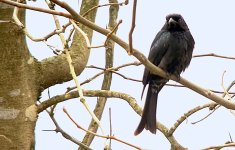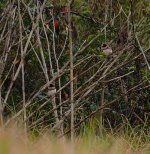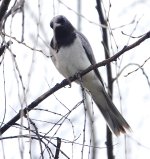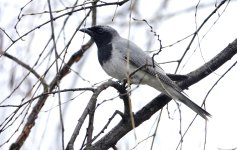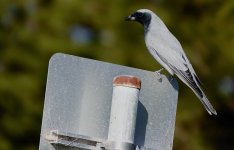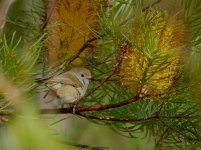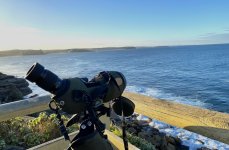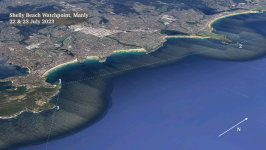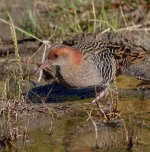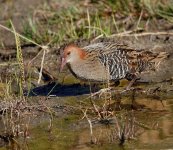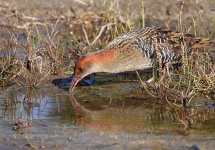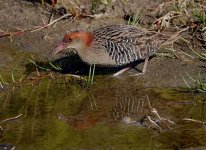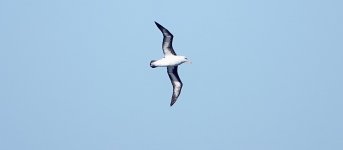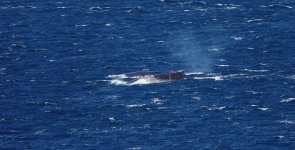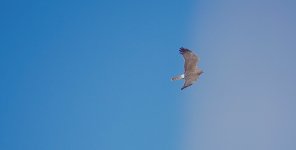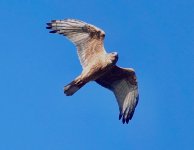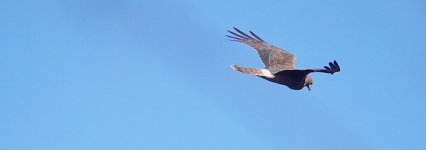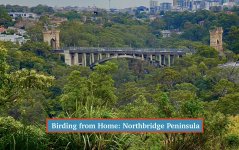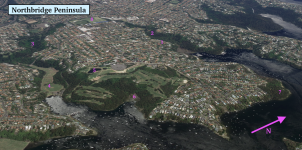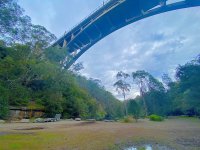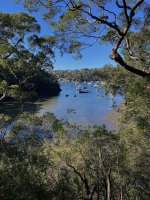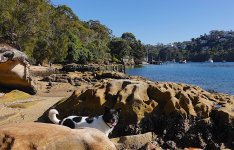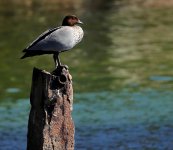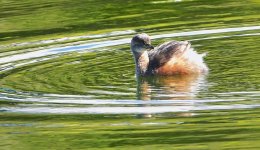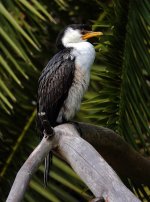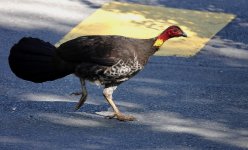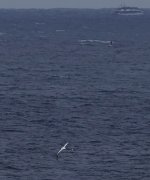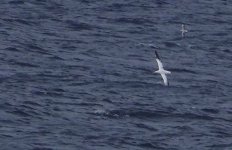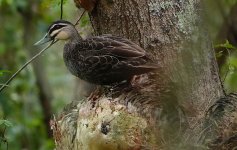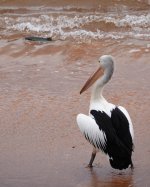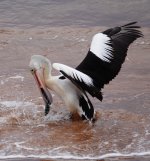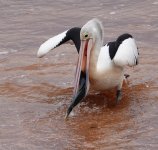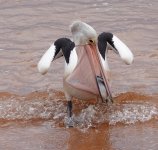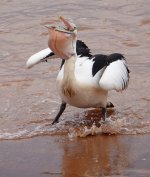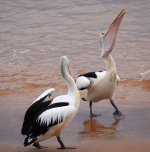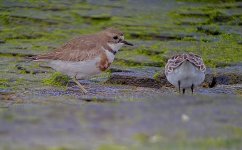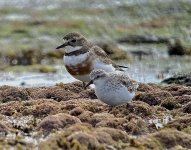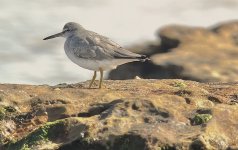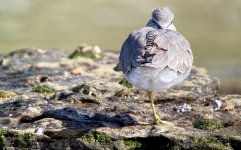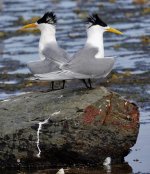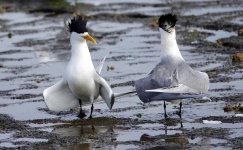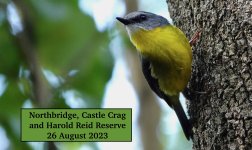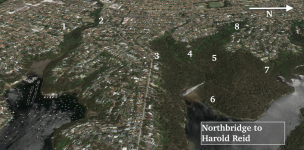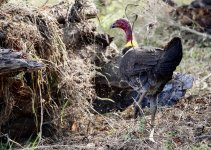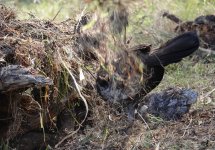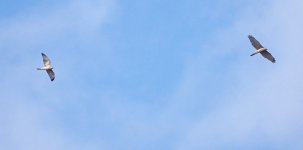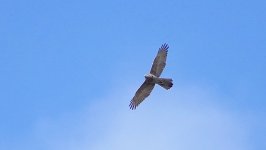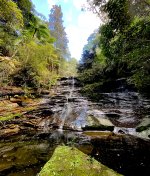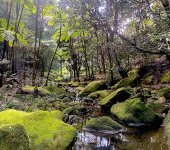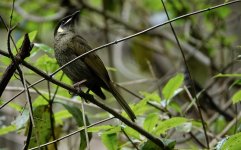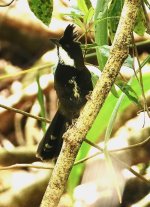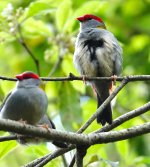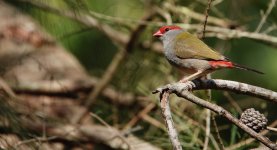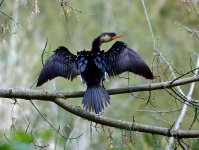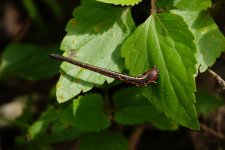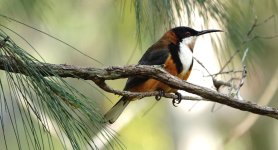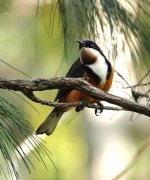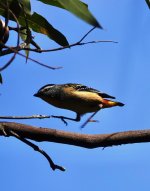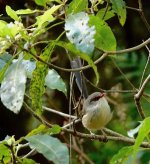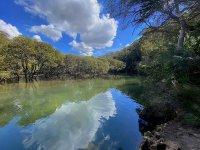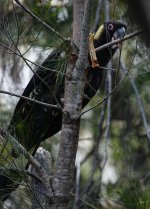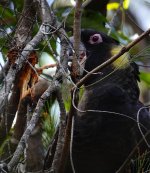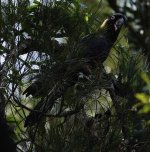Birding from home: Northbridge Peninsula
View attachment 1525644
Two weeks ago we moved from Cremorne Point to Northbridge which is just couple of kilometres NW of where we were previously. The big difference is that we are no longer in a blow-street-level flat, but instead in a house (1) looking north over the forested slopes Sailors Bay Creek (2) . We can't quite see the water, but this is a short stream with a muddy mangrove-fringed mouth. There are stretches of habitat and views over the water all round the peninsula, all of them better than anything at Cremorne, and my recent walks have delivered The numbers on the aerial image below show these patches along the route of an anti-clockwise dog walk, except for (8) which is the sports field for a local school, where I capped my birdiest ever dog walk with my 45th and 46th species - a
Magpie-lark and a pair of
Masked Lapwings.
View attachment 1525646
Spot No 3 is Flat Rock Creek, a park which runs from the right-hand corner of the sports field through a well-wooded steep-sided valley and down a couple of small waterfalls before flattening out for the final few hundred metres.
View attachment 1525684 View attachment 1525685
It then disappears into a drain underneath the Tunks Park Sports Field (4), which has contiguous habitat on its equally steep sides. The habitat on the northern edge is contiguous with the woods around the golf course and right all along the coast past Wreck Bay (6), but it required a steep climb from the coastal path the check out the ponds (5)on the eastern corner of the golf course. Thankfully the course is public and not too busy so we can walk where we like provided we respect the golfers, the greens, and keep safe. The final piece of habitat is Clive Park (7) at the eastern tip of the peninsula, where this
Maned Duck had taken a liking to an old post.
View attachment 1525773
View attachment 1525682 View attachment 1525683
Best birds so far include
King Parrots seen from home,
Grey and
Collared Sparrowhawks (they were few and far between at Cremorne),
Striated Herons at both Sailors Bay and Flat Rock Creek, flyover
Australian Pelicans and a whole bunch of passerines for which there simply not enough habitat at Cremorne. These include
Red Wattlebird, Brown Thornbill, Brown Gerygone, Crimson-browed Firetail, Grey Fantail, Eastern Yellow Robin and
Eastern Spinebill. Both
Superb and Variegated Fairy Wrens are present, as are the ever-wonderful
Spotted Pardalotes. Also new owing to the presence of fresh water are the
Coot, Dusky Moorhen and
Australasian Grebe on the golf course ponds, which are just about big enough to hold
Maned Duck and
Pacific Black Duck. There are good numbers of
Sulphur-crested Cockatoos and a fine flock of 45+
Little Corellas enlivened our walk across the golf course this morning.
Little Pied and
Little Black Cormorants like Flat Rock Creek and Sailor Bay respectively, and an adult
Australasian Darter was drying itself on the end of Castle Crag this morning.
View attachment 1525774 View attachment 1525775
All in all a significant upgrade birdwise from Cremorne! And to provide a little context the
site I saw my first Owlet Nightjar back in is just a kilometre or so further north in Castle Crag.
Cheers
Mike






